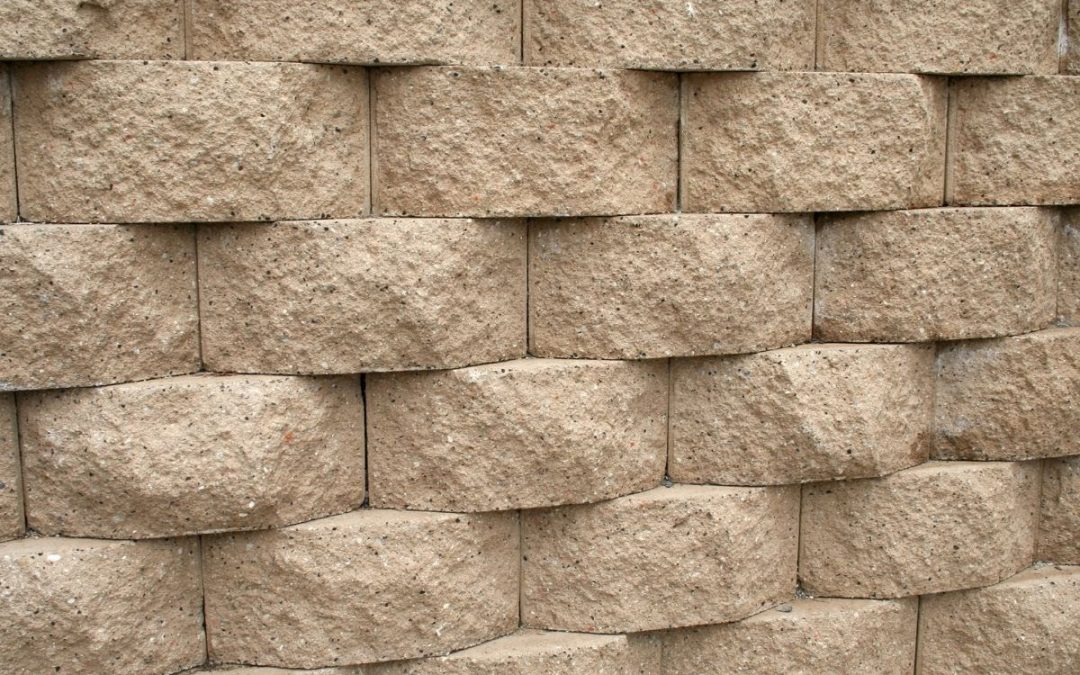Published March 11, 2021
There are many types of retaining walls that you can use for different scenarios and settings. Because of this, it leads the first-timer to utter confusion.
If you’re wondering how much a retaining wall costs, there’s a lot of things you’ll need to consider. Here’s what you’ll need to know and how much you’re going to spend.
What is a Retaining Wall?
Retaining walls are any structure that holds or keeps soil behind them. These walls are instrumental in preventing landslides, floods, and so much more.
They also have a wide range of uses. You can use retaining walls to stabilize hillside properties, yard expansion, or keeping water at bay on lakefront properties.
There are four basic retaining walls: gravity retaining wall, cantilevered retaining wall, sheet piling retaining wall, and anchored retaining wall.
Gravity Retaining Wall
The gravity retaining wall is the most basic type of retaining wall. Gravity retaining walls uses sheer weight and mass to hold the soil at bay.
Since gravity retaining walls are mostly about weight, they have the widest variety when it comes to materials for the wall. You can use bricks, pavers, or unmortared stones. You can also use the famous dry-stacked stone.
Cantilevered Retaining Wall
The cantilevered retaining wall makes use of physics. It’s a retaining wall that uses an “L”-shaped slab under the soil as the foundation.
It uses the soil’s weight to hold the slab down for the wall not to fall forward. It’s more preferred for commercial retaining walls for its strength.
Sheet Piling Retaining Wall
The sheet pile retaining wall is a thin wall of steel, wood, or vinyl that is put directly into the soil. It’s the go-to retaining wall when you want to save space in your area.
The sheet pile retaining wall only works in softer soils, and that’s why these often have structures to provide additional reinforcement. A good rule of thumb is to put a third of the sheet piling into the ground for every two-thirds above it.

Anchored Retaining Wall
Anchored retaining walls are Retaining Walls that use anchors driven into the soil behind them and attached with cables or strips. They mechanically drill these anchors into the ground and expand them by injecting pressurized concrete or other means.
What are the Costs of Building a Retaining Wall?
If you’re planning on building a retaining wall, you must consider the wall’s purpose and usage. It will not only affect every aspect of your build, but it will affect how much you need to spend.
You need to consider three things when building your retaining wall: the location, soil type, and wall design. The costs of building a retaining wall will depend heavily on these three things.
Location
Please take note of irrigation, local regulations, your property boundaries, and stormwater management protocols. There are limits that you should know when you’re building your retaining wall. You should also be aware of any natural drainage patterns that could have an environmental impact.
Soil Type
Make sure to check if your soil type is strong enough to support a retaining wall. It should be firm and solid without excessive moisture. You can use sandy soils for drainage, and you should avoid building on clay as it’s unable to support the wall’s weight.
Wall Design
It’s essential to take note that gravity will pull your retaining wall downslope. Your design should counteract these effects when planning the build of a retaining wall.
It would be best if you also considered the weight of the materials you’re using to create a retaining wall. Excessive weight can cause your retaining wall to collapse.
Here’s a list of materials and their estimated costs. You can also check the nearest home depot.
- Cinder Blocks $13 per sq. ft.
- Poured Concrete $23 per sq. ft.
- Wood Timber $20 per sq. ft.
- Stone Veneer $13 per sq. ft.
- Boulder/Rock $11 per sq. ft.
- Gabion $6-$35 per sq. ft.
- Brick $14 per sq. ft.
- Corten Steel/Metal $4 per sq. ft.
- Earth/Chalk $5-$20 per sq. ft.
The materials aren’t the only things you’ll need to take into account. Here’s a list of how much the overall project might cost. The costs will depend locally, so make sure to double-check at the nearest home depot.
- Full Concrete Demolition $5 per square foot
- Leveling & Grading $1.31 per square foot
- Heavy Equipment $175
- Materials $5-$32 / sq. ft.
- Labor Fees $55 per hour
- Designs and Architectural Service $80 per hour
- Water Drainage System $67 per linear foot
Lastly, here’s the estimated price for a retaining wall (length x depth).
- 10 x 3-feet (30 sq.ft.) $1,650
- 20 x 3-feet (45 sq.ft.) $2,900
- 25 x 3-feet (75 sq.ft.) $3,800
- 30 x 4-feet (100 sq.ft.) $6,224
- 50 x 4-feet (160 sq.ft.) $9,000
- 60 x 4-feet (240 sq.ft.) $12,000+
Retaining walls are among the top four features that add a great deal of appeal and value to your home. If you’re planning to make one, then it should be designed as best as it can.
Interested In Cutting Technologies?
For nearly 40 years Cutting Technologies (CTI) has been the go-to demolition contractor for technically demanding, one-off jobs. Our wealth of experience enables CTI to bring “outside-of-the-block” approaches to achieve the impossible. Contractors trust CTI to get the job done right. Take a look at our demolition services on our website.

About The Author
Dan Walter Reyes is a professional writer for a number of renowned websites. His passion for engineering and construction led him to study topics related to this industry in depth through sleepless nights and endless words. He hopes to share his knowledge with the world.

